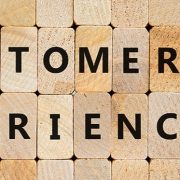Prepare for Tomorrow… 5 Steps to Future-Proof Your Workforce
What technology and skill sets can you invest in today that can help your employees successfully meet the challenges of the future? Follow these five steps to engage your employees and ensure your business is ready for whatever comes next.
1. Practice Curiosity
You and other decision-makers at your company have probably spent a lot of time asking yourselves big questions: How do we fulfill our mission statement? Who is our client base? Where are our growth opportunities? Much of the time these discussions occur behind closed doors, and while they’re important conversations to have, they’re not the only ones that should be happening.
Take time as you plan for 2024 to practice curiosity about your business on a granular level. Talk to your employees about their experiences and ask them for their thoughts. Often, those on the ground floor have the most interaction with your clients or know the smallest details that keep everything running. What works for them? What concerns do they have? What do they have to contribute and how can you facilitate that?
Begin these discussions with an open mind, asking new questions and understanding that you might not already know the answers. Explore avenues that might not be the most obvious. Try different ideas, and don’t be afraid to fail. Exercising genuine curiosity is an important leadership trait that takes practice but ultimately leads to exponential possibilities for growth.
2. Embrace Empathy
This second tip builds on the first. Curiosity is the start of connecting with your workforce, but empathy puts it into action. Meeting Management software leader Zipdo reports that leaders showing compassion for work environment issues and staff well-being was essential in increasing motivation in 96% of employees.
The pandemic made it clear that work styles vary and what works for one person may be completely unproductive for another. When you begin to ask questions, be prepared for a variety of answers and know they might all be correct on some level.
One key aspect to maintaining your workers’ well-being is to meet them where they are. The last few years have been a wide-scale experiment in new styles of work. According to the Harvard Business Review, many companies recognized that personalized, non-traditional schedules and workplaces lead to increased productivity and happiness, with 58% of organizations having invested in their employee experience.
Allowing flexible workdays, recognizing progress, encouraging mental health, and sometimes simply listening, not only makes you a better leader but keeps your employees feeling fulfilled, healthy, and engaged.
3. Foster Collaboration
Once you’ve worked to understand your employees’ needs, it’s time to come together and collaborate. It looks like non-traditional offices are here to stay, with a majority of people saying they want to work from home at least part of the time.
With blended workspaces blurring the line between in-person and remote, it’s essential to ensure everyone feels connected no matter where they are. Zippia found that “86% of employees in leadership positions blame lack of collaboration as the top reason for workplace failures” and that job satisfaction increased by 17% through collaboration.
Real-time communication is critical, whether you use chat, video conferences, phone calls, or email to keep up with projects. Using all-in-one tools and integrated collaboration software facilitates switching between modes of communication and promotes trust between colleagues, which encourages creativity, a sense of belonging, and that elusive authentic culture many employees value.
4. Adopt and Adapt Technology
When the COVID-19 lockdowns first took effect, companies were thrust into the digital-first world, ready or not. Almost 3 years later, even the most self-identified “technology laggards” have gotten on board, with many workplaces experiencing significant increases in operational efficiencies.
Taking advantage of technology is no longer optional for companies. Investing in cloud storage, unified communications systems, and employee training is critical for success. Adopting the right technology can make or break the productivity of your workforce.
5. Maintain Flexibility
The final way to future-proof your workforce is something we’ve all been practicing for a while now – maintaining flexibility in the face of whatever comes next. Though it may be challenging, continue to embrace change and allow your company to grow and adapt.
Listening to your employees and recognizing that each of them has unique needs will not only make you a better leader, but it will help guide your business through whatever lies ahead. Meeting workers where they are reminds them that you care and encourages satisfaction. After all, a happy employee is more productive and dedicated to their job.
Technology has helped with this transition already and integrating it into your workflow will keep your employees engaged and your company successful. Using new tools instead of trying to force old ones to work will keep you connected and on top of your game.
2023 was a year of technological evolution for many companies, and 2024 will be the year to reap the rewards of that evolution.
No matter your needs, TCI can help you prepare for tomorrow. Call us today at (703) 321-3030 or GetHelp@tcicomm.com.













Leave a Reply
Want to join the discussion?Feel free to contribute!